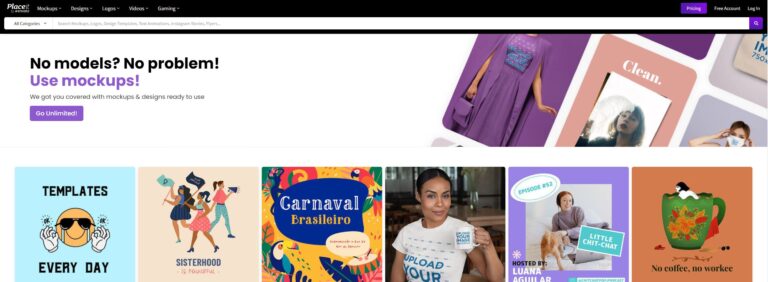How to Create a Social Media Strategy for Small Business
Creating social media strategy for small business is a process that takes time and patience. In this article, we will discuss how to create a solid strategy for your brand on Facebook, Twitter, LinkedIn, YouTube and other social media platforms. The most important factors in creating a social media strategy will be to focus on creating strong content and amplifying it through paid advertising. Social media is the perfect medium to include your target audience in your marketing campaign so that any potential customers can connect with you either in person or online. what you want from social media.
You should clearly understand what you want to accomplish with each platform in order to ensure that your message reaches its intended audience effectively. There are many reasons your company may choose to use different platforms for their marketing efforts; however, it’s important that you don’t ignore any platform because it has other features or services that can help boost the reach and engagement of your brand. Your social media strategy should be well-planned so that you will build relationships with multiple types of audiences while encouraging them to engage with you on multiple channels.
Why Social Media is Important
Social media is a communication method that allows people and businesses to interact with one another using online tools. We define it as “the practice of exchanging information, ideas and feelings through the use of electronic networks and technologies (e.g., Internet, mobile phones)”.
The various social media platforms include Facebook, Twitter, Instagram, Pinterest and LinkedIn. These platforms differ from each other in terms of their functions and their characteristics. Facebook is the most widely used social media platform because it allows users to share their personal information on their profiles to connect with friends and family.
People use Facebook to keep in touch with each other, to connect with friends and family who are also on Facebook, or just for entertainment or for sharing photos or videos. Twitter is a microblogging platform that allows users to communicate directly with people from all over the world by retweeting tweets from other Twitter users. Instagram is a picture-sharing platform that allows its users to upload photos in order to share them with others via direct messages or public profiles or tags added with hashtags. Snapchat is also a picture-sharing platform that allows its users to send short videos by tapping on the camera icon as well as send messages through text message without raising eyebrows from other people who are using Snapchat. Pinterest is an image-sharing platform that allows its users to pin images on pages called Pinterest board.
Social Media Marketing Strategy
The most powerful way to use Social Media is to be on multiple platforms simultaneously. This means that you need a strategy to deploy your social media efforts so that you can reach as many people as possible in the shortest amount of time. There are several methods to do this, and I’d like to share some strategies I’ve used successfully over the years that can help any small business create their own social media marketing strategy.
This is the first part of a series about using Social Media for small business marketing success. In this post, I will describe the best strategies for using social media in small business marketing and how your business can use these strategies for maximum growth and success.
Identify your target market
Social media is an extremely powerful promotional tool. Social media allows you to reach a larger audience than traditional marketing methods. It also allows you to be much more creative and dynamic in your message. So, how do you go about creating a social media plan? How do you get started? Creating a social media strategy is not as hard as it seems. There are three simple steps: Identify your target market, select your social media platforms, and develop a social media plan for each platform. Your target market can be anyone who’s interested in your brand or product, from the shoe store to the supermarket to the CFO of an investment bank.
Your brand could be anything from a dog breed to the car you own (or don’t, and – lots of us don’t!!).
Your business could be any industry, from publishing to construction. As far as platforms, there are many free options out there for small businesses; if you’re planning on using Facebook Pages for example, it doesn’t matter which one you choose, just pick one that works best for your business and stick with it. You’re still going to want to use other platforms like Pinterest and Twitter though because they are very popular among small businesses today and can help drive traffic to your website to make sales or reaching new customers with fresh content (like viral videos).
Understand how social media sites work
Social media has become a big part of the online world. It is crucial for a small business to understand how social media work. A social media strategy comprises an overall plan, specific goals, and strategies.
A social media strategy is a plan that’s specific enough to give you the edge over your competitors. A social media strategy will take into consideration all aspects of your business, especially advertising and marketing.
A social media strategy’s goal is to increase your brand awareness, reach your target audience, and drive sales. Keep in mind that there are many factors that can affect your goals, especially on ad campaigns you run on social media sites like Facebook or Twitter. You may not reach as much population as you would like because of the limitations imposed by these sites; however, this does not mean that you cannot achieve those goals.
All it takes is some time and effort. In order for a small business to implement a social media strategy, follow the next steps.
1) Determine what goals could benefit from using a social media site and research which ones would help achieve those goals.
2) Research various options for advertising on different sites.
3) Plan out which platforms you should use for advertising.
4) Implement an effective plan for advertising.
5) Write content that generates customer interest.
6) Take advantage of other aspects of marketing.
7) Create content with different formats.
8) Monitor the frequency of visits.
9) Evaluate effectiveness.
10) Advertise in other ways.
11) Consider implementing community features.
12) Engage customers
Choose the right networks for your business
For social media, there are many distinct elements of building a successful strategy. Whether it is posting on Twitter or Facebook, creating content on your blog or website, or promoting your business through social media, there are many strategies that can achieve your goals.
“Disclosure: Some of the links below are affiliate links. This means that, at zero cost to you, I will earn an affiliate commission if you click through the link and finalize a purchase.”
It is essential that you understand your audience and what they want before starting any social media campaign. One of the most common questions small business owners have is, “How do I find out what my potential clients want?”
The answer? Google has an appropriate answer. Search for the keyword you are after and then look at the results. Hopefully, you will see some relevant search results showing up in your search results. Another important strategy that should be included in any small business’s social media strategy is having a niche profile.
This can be done by having several profiles for different businesses. You could have a small business profile for restaurants or bars with unique keywords like “beverages” and “cocktails” or have one dedicated to graphic design firms and beauty salons with keywords like “photography” and “makeup” You can also use this strategy by creating as many sub-profiles as you think your niche needs: an advertising profile for businesses who use SEO strategies; a service profile for businesses who provide services to their customers; etc… The point is to create as much content from multiple sources as possible in order to meet your audience’s needs and interests. The next step, after creating the proper profiles for each niche, will be marketing.
How do you market yourself? The best way to reach new customers is through word-of-mouth; however, this requires being connected with people who already know about you.
People whom may not be customers yet but who would want to buy something if they knew about you! The best way to reach new customers would be via direct email marketing campaigns targeting specific groups (for example, students) on platforms such as Facebook or Twitter, where these groups share their experiences more frequently than other audiences (such as employers).
These campaigns could also include promotional products sold only at certain times of the year if targeting certain areas such as university students during National Sales Month, but this involves setting up recurring email campaigns over longer periods so that they can be more effective at reaching their target audiences (for example, by sending them newsletters once every two weeks).
Develop a social media marketing plan
“Disclosure: Some of the links below are affiliate links. This means that, at zero cost to you, I will earn an affiliate commission if you click through the link and finalize a purchase.”
Social media is booming. According to the latest estimates, there are over 4.62 billion social media users around the world in January 2022. That’s a lot of eyeballs on your business and it can bolster your marketing efforts. Finding a social media strategy that fits your business is not as simple as saying, “I want to post this on Facebook and Twitter.” A well thought out plan will include what you want to accomplish through each channel and how you will achieve these objectives. This strategy must also incorporate a set of brand guidelines that will ensure that the content you post on each channel is relevant, informative, and engaging. The details are essential because each social network has its own rules regarding what’s appropriate content (e.g., no advertising).
Execute your plan regularly
Social Media can be a positive force for your business. With the growing popularity of Facebook, Instagram, and Twitter, it’s easy to see that social media is an effective marketing tool that can boost your brand awareness, motivate your customers to purchase from you, and promote your business. However, planning and executing a social media strategy can be challenging. In fact, a recent article by Joe Pascaretta on Forbes found small businesses aren’t adequately preparing for social media advertising or spend just enough time focusing on their social media strategy.
To help small businesses develop a social media strategy that will work for their business, and reach customers in the best way possible, we’ve pulled together some tips from our own experience on how to successfully execute a social media strategy for small businesses.





